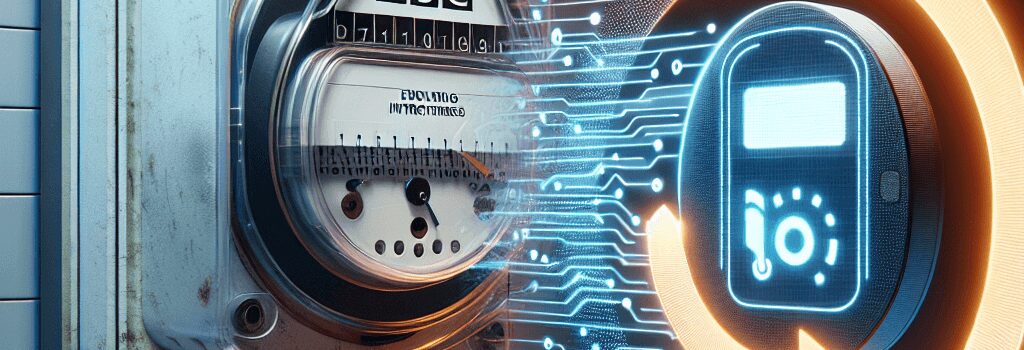Smart Metering: The End of BBC-Controlled Meters

For decades, the United Kingdom has relied on a rather unusual method to deliver off-peak electricity pricing—a system built around BBC Radio 4’s Long Wave service. As cutting-edge smart meters steadily replace these legacy systems, technical challenges and transitional hiccups are emerging that could mark the end of an era defined by radio teleswitch technology.
A Brief History of the Radio Teleswitch System
Introduced in the early 1980s, the radio teleswitch system was designed to automate the changeover between standard and off-peak energy tariffs for Economy 7 and Economy 10 users. These meters contained a small, dedicated radio receiver tuned to 198 kHz—a frequency broadcast from the powerful Droitwich Transmitting Station. Every minute, 30 messages were transmitted until the correct 50-bit data packet activated the switch, signaling customers to take advantage of reduced power rates. The simplicity and effectiveness of this system made it an integral part of the national energy strategy for decades.
Technical Overview of the Legacy System
The inner workings of the Radio Teleswitch system were as ingenious as they were fragile. At the heart of the BBC’s continuous broadcast vital to these meters were two rare, tungsten-centered, hand-crafted cooled anode modulators (CAMs). These components ensured stable amplitude modulation across a 198 kHz long wave band, and were essential for maintaining the integrity of the precise digital messages. Over time, manufacturing these CAMs became increasingly hazardous due to the delicate nature of glass valves and the possibility of catastrophic transmitter failure if any flaws occurred. The dwindling supply, now reduced to just a couple of valves, has forced both the BBC and utility companies to grapple with a looming technological deadline.
Modern Transition: From Analog Signals to Smart Meters
As of early 2025, an estimated 600,000 UK customers still depend on these radio teleswitch (RTS) meters. In a pre-planned transition, the BBC and energy utilities have set June 30, 2025 as the cutoff date for the RTS service. This coordinated shutdown marks the end of an era, as customers are being rapidly upgraded to smart meters—a system that leverages modern communication protocols over radio, broadband, or cellular networks.
Challenges in the Transition to Smart Metering
While smart meters represent a significant leap forward in energy management, the migration is not without its pitfalls. Recent reports have highlighted that more than 4 million smart meters across the UK are experiencing technical glitches. Some of these devices have been generating anomalous readings resulting in eye-popping charges. In certain instances, estimated billing rather than real-time consumption data has led to errors—most notably illustrated by a case that saw Sir Grayson Perry facing simultaneous charges amounting to £39,000. The root cause of these issues can often be traced back to the decommissioning of the 2G and 3G communication networks, which many legacy smart meters still operated within. As the industry plans for a full transition to 4G and 5G networks, cybersecurity and interoperability concerns persist, raising the urgency for a carefully managed technological evolution.
Deep Dive: Technical Evolution and Expert Perspectives
- Engineering Challenges: Experts note that the transition away from analog signaling to digital smart meters requires extensive re-engineering. This includes not only updating the communication protocols but also ensuring that devices are robust enough to handle dynamic load management across various network conditions. The complexity of overhauling vast numbers of devices without disrupting power management has been likened to a large-scale firmware rollout on an industrial level.
- Cybersecurity and Data Integrity: As smart meters become more interconnected, ensuring secure communication between the meter and the central utility systems has become paramount. Industry specialists have raised concerns about vulnerabilities in legacy systems that might not receive timely security patches, thereby exposing customers to the risk of data breaches and billing fraud.
Future Perspectives: Digital Versus Analog Solutions
Looking ahead, the demise of the BBC-controlled electric meters is not just a tale of outdated technology, but also a lesson in the challenges of infrastructure modernization. The advantages of smart meters are clear—the capability for real-time data analytics, better demand response, and improved energy efficiency are driving the shift. Yet, for the small percentage of customers who remain dependent on legacy systems or have limited access to high-speed internet or newer radio signals, the transition may prove disruptive.
Industry analysts emphasize the importance of a coordinated, multi-stakeholder approach. This involves utilities, technology providers, and regulatory bodies working together to not only replace the obsolete hardware but also to upgrade the supporting network infrastructure. The lessons learned from the gradual retirement of the 3G network and the analog television era point to the need for robust contingency planning and proactive communication with end-users.
Conclusion: Balancing Innovation with Reliability
The end-of-life of BBC-controlled electric meters symbolizes a critical juncture in energy distribution technology. As the UK transitions to smart metering systems, balancing innovation with system reliability remains the key challenge. Much like previous technological transitions—be it the phasing out of analog television or the transition from 3G to 4G—the success of this migration depends on a meticulous, well-planned strategy that minimizes disruption and ensures the security and accuracy of every digital reading.
Ultimately, the story of the Radio Teleswitch system is one of ingenious early engineering and the inevitable march of progress. While the legacy system may soon become a historical footnote, its impact on energy management and consumer billing is a reminder of how even the simplest technologies can play a substantial role in national infrastructure—until the time comes for innovation to take center stage.